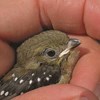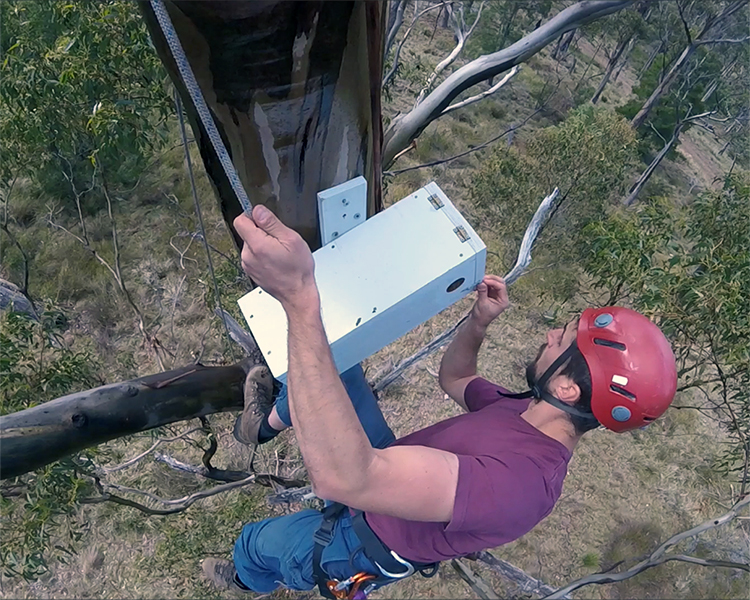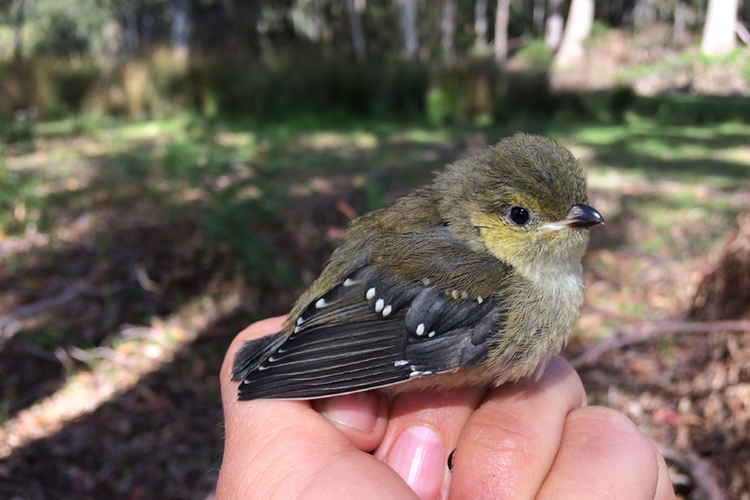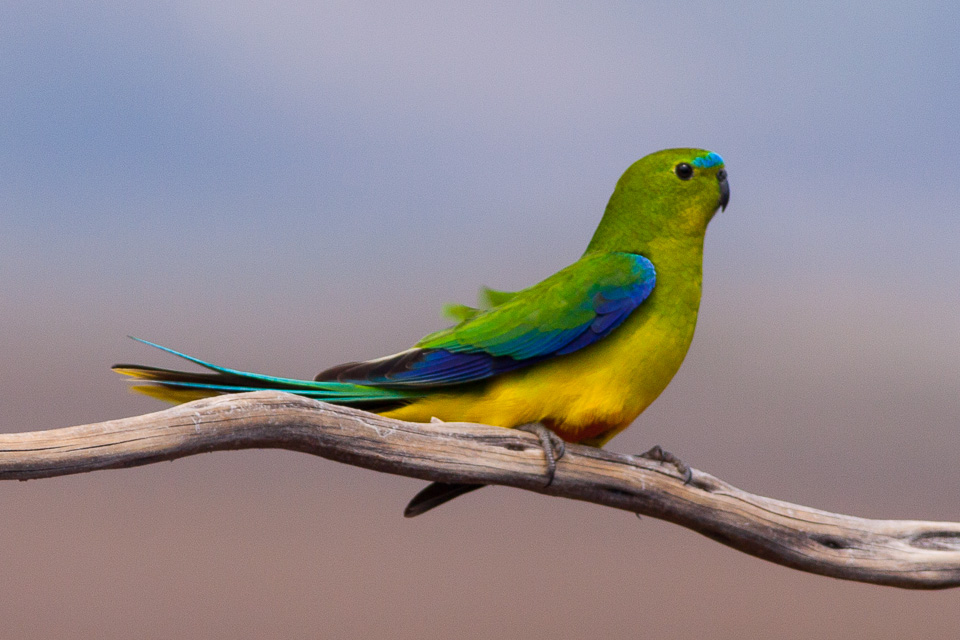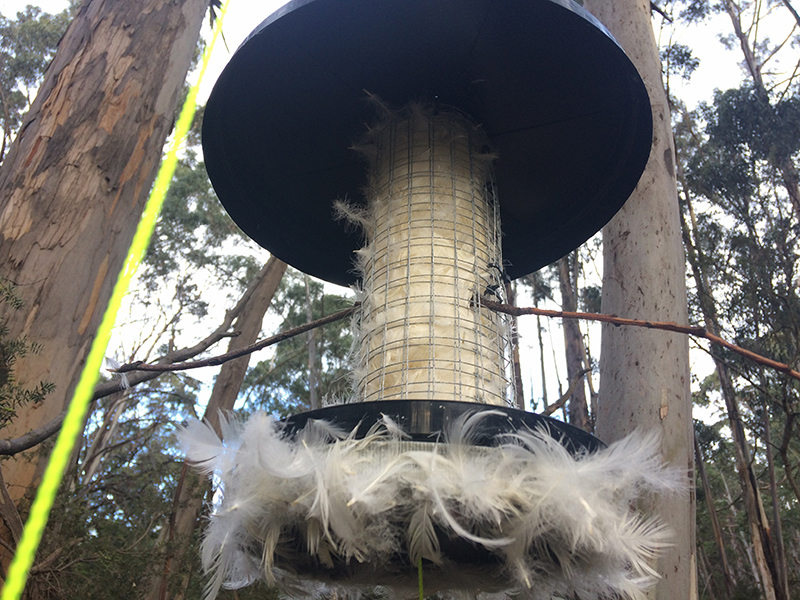
Researchers help endangered birds to ‘self-fumigate’ their nests
Thursday, 22 October 2020Parasites are taking a heavy toll on the chicks of Tasmania’s endangered forty-spotted pardalote, but with a helping hand from science these tiny birds can ‘fumigate’ their own nests.
Pardalotes nest in the hollows of old trees, and build a small nest using grass, tree bark and soft feathers found on the forest floor. These snug nests keep their tiny chicks warm and dry.
However, parasitic flies (Passeromyia longicornis) are also attracted to these cozy nests. When the chicks hatch the fly maggots burrow into the skin of the live baby birds to feed on their blood.
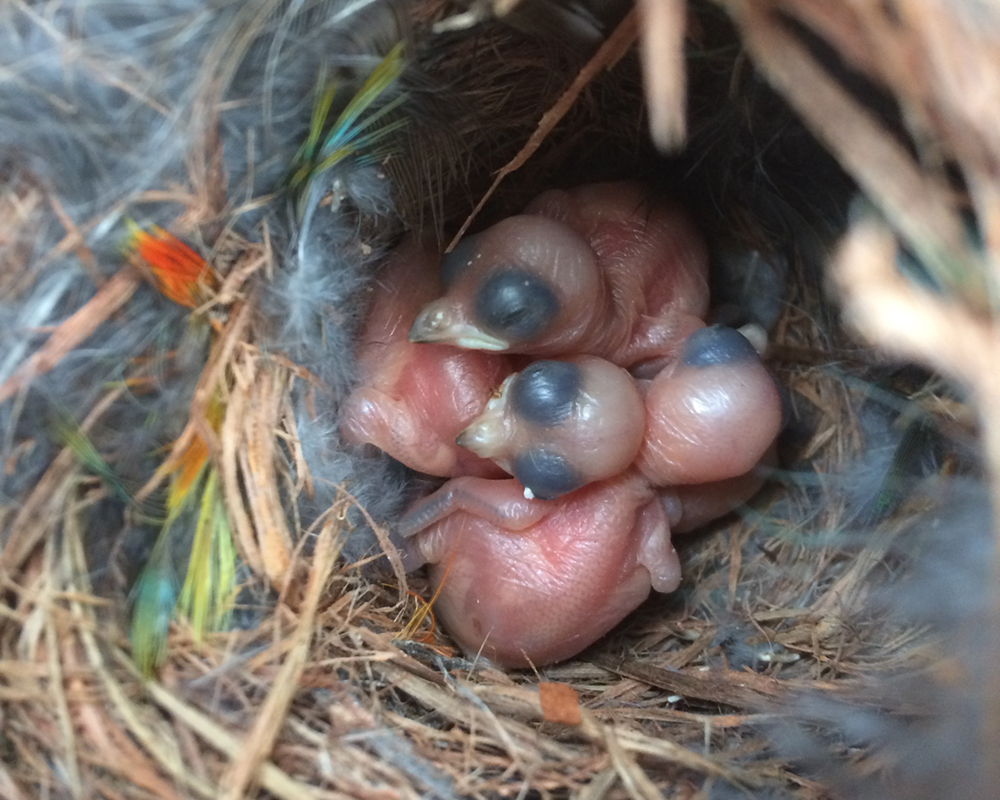 The research is improving the survival of forty-spotted pardalote chicks by protecting them from a fly parasite. Photo: Fernanda Alves
The research is improving the survival of forty-spotted pardalote chicks by protecting them from a fly parasite. Photo: Fernanda Alves
The parasite is killing nine out of every 10 chicks in some areas according to Ms Fernanda Alves, from the Research School of Biology at The Australian National University, who is undertaking a PhD on the birds.
“This species has already suffered major population declines due to habitat loss. This parasite could now lead to the extinction of this unique species if nothing is done,” said Ms Alves.
“Manually spraying pardalote nests with a bird safe insecticide has proven to be effective, but the birds nest high in trees so finding and accessing their nests is very difficult.”
The research team, which is part of the Australian Government’s National Environmental Science Program, has found a clever way to help the birds to fumigate their own nests.
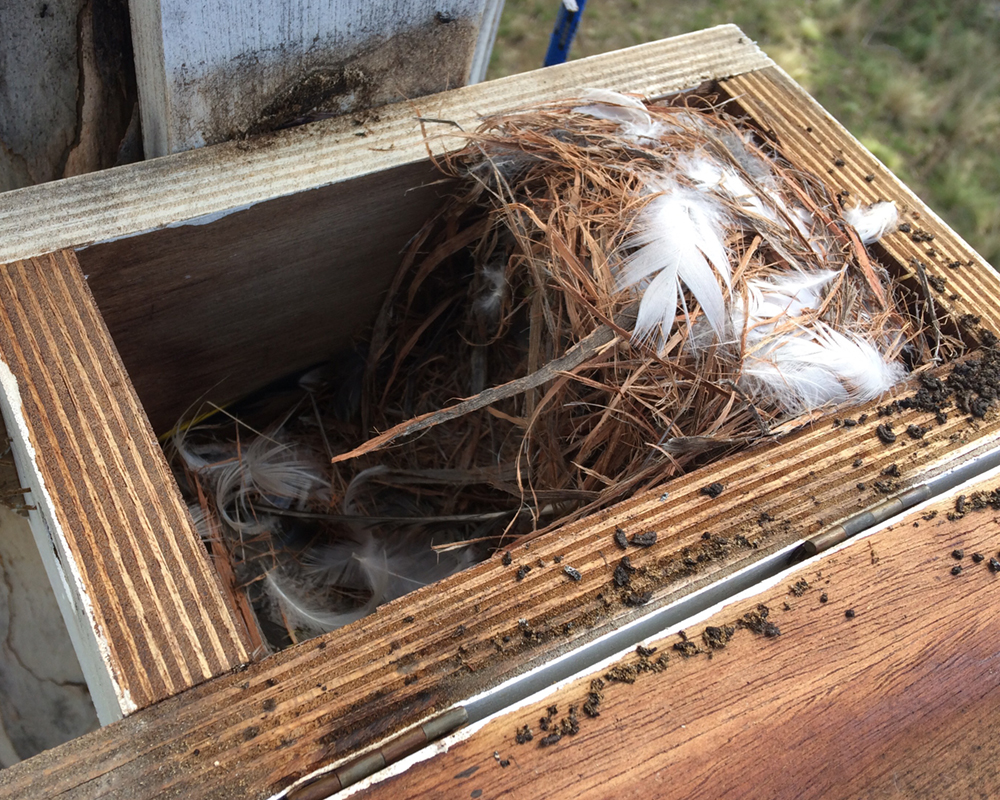
Forty-spotted pardalote nest. Photo: Fernanda Alves
“Pardalotes spend a lot of time looking for bird feathers to build their nests with, so we decided to make use of this natural instinct to get insecticide into nests.”
Ms Alves created wire dispensers stuffed with sterilized chicken feathers that were treated with bird-safe insecticide and hung them in trees near pardalote nests.
“The results were fantastic. Birds took the treated feathers back to their nests and as a result 95% of the chicks survived,” said Ms Alves.
“Finding stray feathers on the forest floor is hard work. The feather dispensers gave the pardalotes a hand with nest building and fixed their fly problem.
“These feather dispensers provide us with a very cheap and effective way to improve nest survival of forty-spotted pardalotes.
“These birds are endangered by loss of habitat, and we are thrilled to have a new tool that ensures that in the areas where these birds still survive, they can still produce enough offspring to hopefully prevent extinction.”
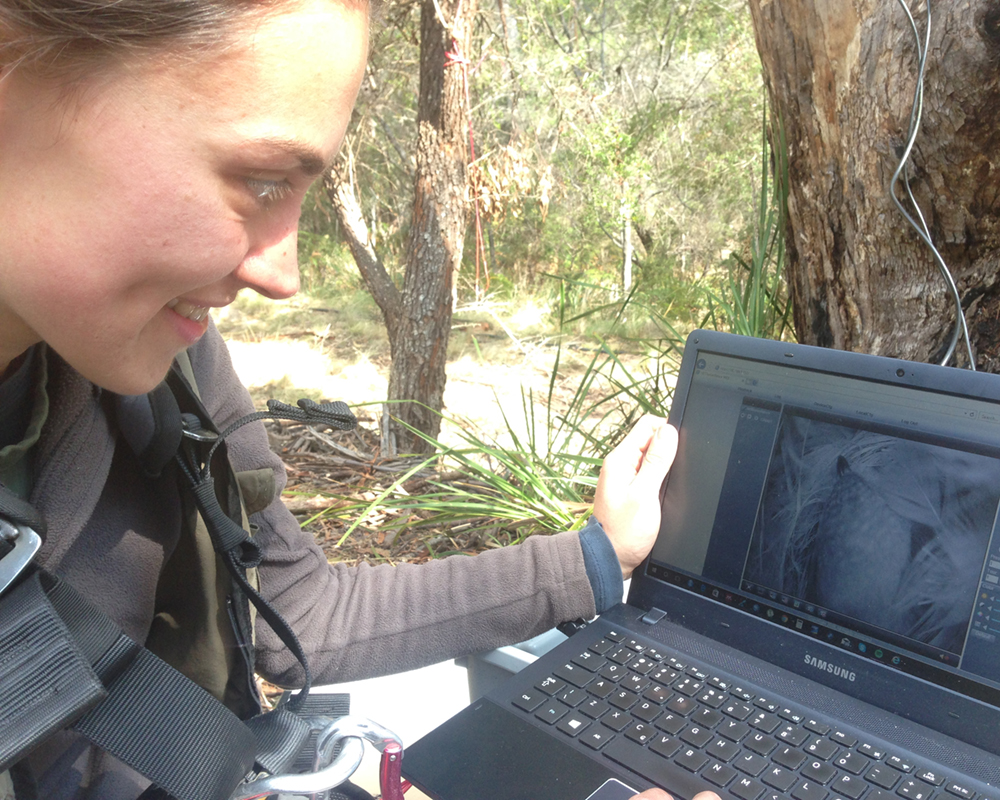
Researcher Fernanda Alves watches the action inside a nest box caught by a remote camera. Photo: Fernanda Alves
Dr Sally Box, the Australian Government’s Threatened Species Commissioner, said the research was an important breakthrough for the conservation of this species.
“The Forty-spotted Pardalote is a beautiful Australian bird endemic to Tasmania, but with so few remaining it’s also one of our rarest.”
“This new, promising research will help tackle the threat posed by parasitic flies and will be critical in the long-term recovery of the Forty-spotted Pardalote.”
The new research has been published in the scientific journal Animal Conservation.
The research was supported by the Australian Government’s National Environmental Science Program, The Holsworth Wildlife Research Endowment & The Ecological Society of Australia, BirdLife Australia, the Mohamed bin Zayed Species Conservation Fund, and the Australian National University Research School of Biology.
More information:
Fernanda Alves, PhD candidate, The Australian National University, fernanda.alves@anu.edu.au
Top image: Sterilised chicken feathers treated with a bird-safe insecticide hang in a dispenser in the forest. Forty-spotted pardalotes are collecting the feathers and flying them back to their nests. In following this natural instinct, they have no idea that they are protecting their chicks from parasites. Photo: Fernanda Alves
